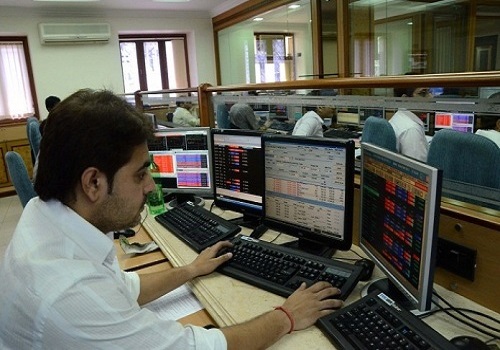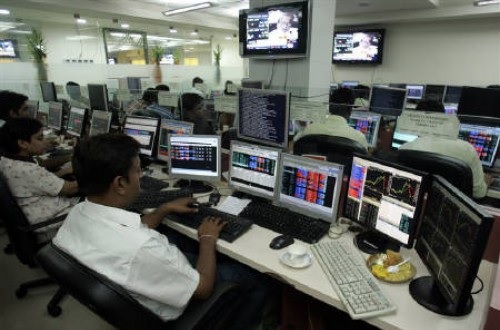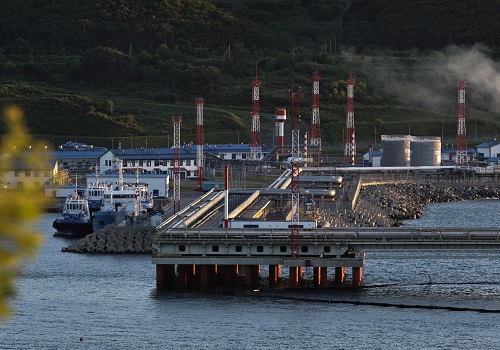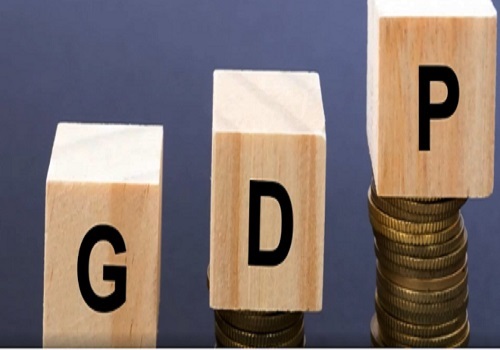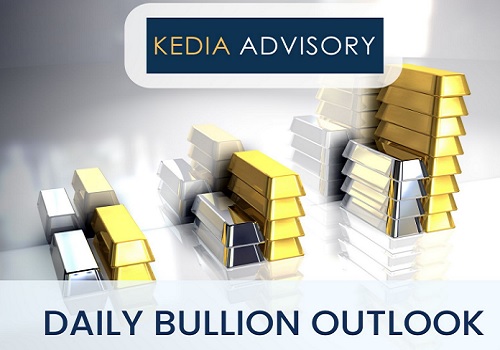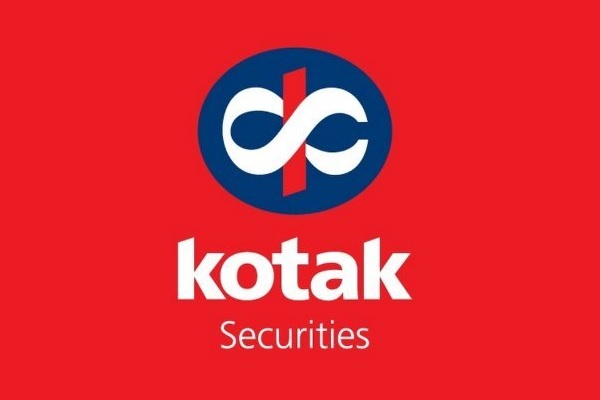Gold trading range for the day is 74945-76455- Kedia Advisory

Gold
Gold settled down by 0.14% at 75,611 due to profit booking, though it remains on track for its largest quarterly gain in over eight years, driven by geopolitical tensions and expectations of U.S. Federal Reserve rate cuts. St. Louis Federal Reserve Bank President Alberto Musalem emphasized the need for gradual rate reductions, citing the recent half-point cut as a clear indication of the Fed's intentions to ease policy. Musalem noted that if the U.S. economy or labor market weakens further, a quicker pace of rate cuts may be necessary. Investors are keenly awaiting U.S. ADP employment data and non-farm payrolls later this week, which could provide further direction for the market. On the global demand front, China’s gold imports via Hong Kong plummeted 76% in August, reaching their lowest level in over two years, as record-high prices dampened demand. China imported 6.245 metric tons of gold in August, down from 25.659 tons in July. Additionally, physical gold demand weakened in key Asian markets, including China and India, as buyers were discouraged by soaring prices. Indian gold dealers offered discounts of up to $19 an ounce over domestic prices, while in China, discounts ranged between $16 and $7 per ounce. Technically, the gold market witnessed long liquidation, with open interest dropping by 5.07% to settle at 16,980 contracts. Gold prices fell by 107 rupees, with support seen at 75,280, and a break below this level could lead to testing 74,945. On the upside, resistance is expected at 76,035, and a move above could push prices towards 76,455, indicating a cautious but potentially bullish outlook depending on further market developments.
Trading Ideas:
*Gold trading range for the day is 74945-76455.
* Gold eased from its recent record high on profit booking.
* Prices show its biggest quarterly gain in more than eight years on the back of geopolitics and the Fed’s rate cut.
* Fed’s Musalem said the U.S. central bank should cut interest rates "gradually"
Silver
Silver settled down by -0.74% at 90,719 as traders locked in profits following a recent surge driven by expectations of incoming rate cuts by the Federal Reserve and other central banks. The Fed's sharper-than-expected 50 basis point rate cut in September, alongside signals of more loosening ahead due to a weakening labor market and easing inflation, has supported the broader outlook for precious metals. Additionally, silver has benefited from global fiscal and monetary stimulus measures, particularly those from China, which are aimed at stimulating its economy. This has bolstered demand for silver in industrial applications, especially in electrification technologies and solar panels, aligning with gains in industrial metals. In the United States, year-ahead inflation expectations eased for the fourth month to 2.7% in August 2024, the lowest since December 2020, as consumer sentiment improved to a five-month high of 70.1 in September. In India, silver imports are set to nearly double this year due to strong demand from the solar panel and electronics sectors, as well as investor interest in the metal, which is seen as offering better returns than gold. India's silver imports for the first half of 2024 jumped to 4,554 tons, up from 560 tons a year earlier, reflecting strong industrial demand and stockpiling amid concerns over rising prices. Technically, the silver market saw fresh selling pressure, with open interest increasing by 1.46% to 25,760 contracts. Prices fell by -679 rupees, with support at 89,895. A move below this level could test 89,070, while resistance is now seen at 91,850, and a break above could push prices towards 92,980.
Trading Ideas:
* Silver trading range for the day is 89070-92980.
* Silver slid as traders cashed in some profits
*The year-ahead inflation expectations in US eased for the fourth month to 2.7% in August 2024, the lowest since December 2020.
* The consumer sentiment for the US was revised higher to 70.1 in September 2024, the highest in five month
Crude oil
Crude oil prices increased by 0.84%, closing at 5742, driven by concerns about potential supply disruptions amid escalating tensions in the Middle East. The possibility of Iran being drawn into the conflict has raised fears of broader instability. Israel's intensified military actions, targeting Hezbollah and Hamas leaders in Lebanon and Houthi groups in Yemen, have further fueled concerns. However, demand outlook data remains mixed, with China’s manufacturing activity contracting for the fifth consecutive month in September and its services sector slowing sharply. In contrast, the potential recovery of Libyan oil output is exerting downward pressure on prices. Libya’s eastern-based parliament’s approval of a new central bank governor could resolve the ongoing oil production crisis. Additionally, OPEC remains optimistic about long-term oil demand, projecting it to reach 120.1 million barrels per day by mid-century, surpassing IEA’s forecasts. In the U.S., crude oil inventories fell by 4.471 million barrels for the week ending September 20th, 2024, well above market expectations of a 1.4 million barrel decrease. Meanwhile, gasoline and distillate stockpiles also declined more than forecasted, supporting prices. Technically, the crude oil market is experiencing short covering, with open interest falling by 7.32% to settle at 17,574 contracts. Prices gained 48 rupees, with immediate support seen at 5676 and a potential test of 5609 levels. On the upside, resistance is likely at 5817, and a move beyond this could push prices toward 5891, indicating a cautious but potentially bullish outlook for the near term.
Trading Ideas:
* Crudeoil trading range for the day is 5609-5891.
*Crude oil gains driven by concerns over prospects of supply disruptions amid escalating tensions in the Middle East.
* OPEC cut its 2024 oil demand growth forecast for the second time
*Israel attacks on Lebanon, Yemen raise wider war fears
Natural gas
Natural gas prices settled slightly lower by 0.04% at 244, driven by increased output and lower demand expectations over the next two weeks. This uptick in production came as Gulf of Mexico facilities resumed operations after Hurricane Helene passed. Additionally, a drop in demand is expected, as over two million homes and businesses remain without power in the U.S. Southeast and Midwest after the storm. The reduced power generation led to a decline in gas consumption from generators. Despite the minor price drop, gas futures have surged by about 45% over the past five weeks, with speculators increasing their net long positions to the highest levels since July, according to the U.S. Commodity Futures Trading Commission. Natural gas output in the Lower 48 U.S. states averaged 102.1 billion cubic feet per day (bcfd) in September, down from 103.2 bcfd in August, but higher than last week as Gulf production rebounded. Meanwhile, demand is forecasted to rise slightly from 95.9 bcfd this week to 96.6 bcfd next week, though lower than prior expectations. The U.S. Energy Information Administration (EIA) projects that U.S. natural gas production will decline in 2024, while demand will rise to a record high. Storage levels increased by 47 billion cubic feet, below expectations, bringing total stockpiles to 3,492 Bcf, which is 159 Bcf higher than last year and 233 Bcf above the five-year average. Technically, the market is experiencing long liquidation, with open interest dropping by 9.56% to 20,493 contracts. Natural gas prices have support at 240.6, with a break below potentially leading to 237.2. Resistance is seen at 247.5, and a move above this level could push prices toward 251.
Trading Ideas:
* Naturalgas trading range for the day is 237.2-251.
* Natural gas eased amid an increase in output over the weekend.
* Speculators boosted their net long futures and options positions for a fourth week in a row to their highest since early July.
* Gas output fell to an average of 102.1 bcfd so far in September, down from 103.2 bcfd in August.
Copper
Copper prices settled down by -0.57% at 851.35, pressured by a global surplus in refined copper. The International Copper Study Group (ICSG) reported a 91,000 metric ton surplus in July, following a 113,000 metric ton surplus in June. For the first seven months of 2024, the market surplus reached 527,000 metric tons, a sharp increase from the 79,000 metric ton surplus during the same period last year. Refined copper output in July was 2.35 million metric tons, while consumption stood at 2.26 million metric tons, indicating a continued supply glut. Adding to the pressure, China's factory activity contracted for the fifth consecutive month, with the services sector also slowing sharply in September. The country's Purchasing Managers' Index (PMI) edged up slightly to 49.8 but remained below the 50-mark, signaling ongoing contraction. Weaker demand in China, the world's largest copper consumer, led to a 12.3% drop in unwrought copper imports in August, reaching a 16-month low of 415,000 metric tons. Despite this, copper concentrate imports were up 3.2% for the first eight months of 2024, signaling some resilience in supply chains. Technically, the copper market saw long liquidation, with open interest declining by -0.31% to settle at 8,285 contracts. Prices dropped by -4.9 rupees, with support at 842.4. If copper falls below this level, it could test 833.3. On the upside, resistance is expected at 863.7, and a break above this level could lead to prices testing 875.9. The market remains under pressure from both surplus supply and weak demand signals from China.
Trading Ideas:
* Copper trading range for the day is 833.3-875.9.
* Copper dropped as market in 91,000 metric tons surplus in Jul 2024
* Copper output in the Andean nation, increased 7.1% year-on-year in the month to 470,478 metric tons.
*Copper output at Freeport's Manyar smelter delayed until November
Zinc
Zinc prices settled down by 0.12% at 280.55 as investors booked profits after a recent rally driven by stimulus measures in China. The decline came despite the news that China's central bank would instruct banks to lower mortgage rates by October 31, as part of efforts to support the country’s struggling property market. However, weak manufacturing data weighed on sentiment, with the Caixin China General Manufacturing PMI falling to 49.3 in September, the lowest since July 2023. Additionally, new orders hit a two-year low, and foreign sales declined the most in 13 months due to subdued global market conditions. On the supply side, the International Lead and Zinc Study Group (ILZSG) revised its forecast for the global refined zinc market, predicting a 164,000 metric ton deficit in 2024, driven by reduced output in Europe, particularly in Ireland and Portugal. Declines are also anticipated in China, Canada, South Africa, and the U.S., though increases in Australia, Mexico, and Congo may partially offset the reductions. Global refined zinc metal production is expected to fall by 1.8% to 13.67 million tons in 2024. Technically, the market saw fresh selling, with open interest rising by 3.28% to settle at 3,278 contracts. Zinc prices declined by 0.35 rupees, and the metal is currently finding support at 278.7, with a potential test of 276.8 if downward pressure continues. On the upside, resistance is likely at 283.6, and a move above this level could lead to testing 286.6, indicating a mixed outlook for zinc prices in the near term.
Trading IdeaL:
*Zinc trading range for the day is 276.8-286.6.
* Zinc fell on profit booking after prices rallied amid stimulus measures from China.
* ILZSG anticipates a surplus of 148,000 tons in 2025.
* The global refined zinc market could see a 164,000 metric ton deficit in 2024
Aluminium
Aluminium prices settled down by -0.79% at 237.6, pressured by weak Chinese economic data. The Caixin PMI for September fell to 49.3, below the market's expectations, indicating a contraction in manufacturing activity. This was driven by a decline in new orders and employment, with business sentiment hitting record lows. Additionally, China's industrial profits saw a sharp contraction in August, casting doubts on the effectiveness of recent stimulus measures to significantly boost demand for industrial metals. Despite these headwinds, BofA forecasted a global aluminium deficit for 2025, predicting prices could reach $3,000 per ton due to tightness in the physical market and backwardation in nearby time spreads. On the supply side, global primary aluminium output increased by 1.2% year-on-year to 6.179 million tons in August, with Chinese production hitting 3.69 million tons. China's aluminium output for August was the highest monthly figure since 2002, fueled by higher prices and steady profits for smelters, especially in Yunnan province due to ample hydropower supply. The aluminium market continues to face a surplus, with a 127,900-ton supply excess in July, contributing to a year-to-date surplus of 930,000 tons. However, the strong production levels, particularly in China, may balance out tighter market conditions expected in the coming years. Technically, the aluminium market witnessed long liquidation, with open interest dropping by -2.42% to settle at 3,221 contracts. Prices fell by -1.9 rupees, with support at 235.2. If aluminium falls below this level, it could test 232.8. On the upside, resistance is seen at 241, and a move above this level could push prices towards 244.4.
Trading Ideas:
* Aluminium trading range for the day is 232.8-244.4.
*Aluminium dropped as China’s manufacturing sector remains in negative territory.
* Global primary aluminium output in August rose 1.2% year on year to 6.179 million tonnes.
* The global aluminium market will see a deficit next year, BofA said.
Cottoncandy
Cottoncandy prices settled down by -0.15% at 57,990, reflecting concerns over potential crop damage due to hurricane Helene last week, but also hopes for a demand revival from China following recent stimulus measures. The USDA has revised India's cotton production forecast for the 2024-25 season down to 30.72 million bales, citing crop damage from excessive rains and pest issues. Additionally, cotton acreage in the current Kharif season is down 9% compared to last year, further weighing on supply. Cotton exports from India for the 2023-24 crop year are projected to rise by 80% to 28 lakh bales, driven by increased demand from countries like Bangladesh and Vietnam. However, cotton imports have also increased to 16.40 lakh bales, compared to 12.50 lakh bales in the previous year. The Cotton Association of India (CAI) estimates closing stocks as of September 30, 2024, to be 23.32 lakh bales, down from 28.90 lakh bales a year ago. Consumption is estimated at 317 lakh bales, with 291 lakh bales consumed by August end. Globally, the U.S. cotton balance sheet for 2024/25 shows reductions in production, exports, and ending stocks. U.S. production was lowered by 600,000 bales due to lower yields in the Southwest. The global cotton balance sheet also saw cuts, with production, consumption, and trade estimates all revised downward. Notably, world production is down by 1.2 million bales, with decreases in the U.S., India, and Pakistan outweighing a larger crop in China. Global consumption is down by 460,000 bales, primarily in Vietnam, Bangladesh, and Turkey, while global ending stocks were reduced by 1.1 million bales to 76.5 million. Technically, the market is experiencing fresh selling, with open interest increasing by 5.5% to 115 contracts. Prices fell by -90 rupees, with support at 57,520, and a test of 57,040 is possible. Resistance is likely at 58,460, with a move above potentially testing 58,920.
Trading Ideas:
*Cottoncandy trading range for the day is 57040-58920.
* Cotton rose on hopes for revival in demand from China and concerns over potential crop damage.
* Cotton exports for the 2023-24 crop year or season ending September are estimated at about 80 per cent at 28 lakh bales
* The U.S. cotton balance sheet for 2024/25 shows lower production, exports, and ending stocks compared to last month.
* In the global 2024/25 cotton balance sheet, beginning stocks, production and consumption are increased.
Turmeric
Turmeric prices declined by 2.34% to settle at 14,026 as traders booked profits after a recent rally, despite concerns of crop damage due to heavy rains in key producing areas like Nanded and Hingoli. The total arrivals dropped to 14,915 bags, down from the previous session's 16,975 bags, largely due to a sharp reduction in arrivals at Sangli, where only 890 bags were reported compared to 11,000 in the previous session. With the harvest still five months away, low supply and adverse weather conditions are expected to keep prices supported in the coming weeks. However, the upside could be limited due to increased sowing in several key regions, including Maharashtra, Telangana, and Andhra Pradesh. In Indonesia, accelerated harvesting due to dry weather could lead to further price declines as supply increases. Turmeric sowing in the Erode region is reported to have doubled compared to last year, and overall sowing in India is expected to be 30-35% higher. Despite this, estimates suggest that the upcoming crop will be around 70-75 lakh bags, with no carryover stock, potentially leading to tighter supply in 2025. Turmeric exports from India dropped by 13.97% during April-July 2024 compared to the same period in 2023, while imports surged by 429.58% over the same period. In July 2024, exports rose by 9.17% year-on-year, but imports fell by 40.69% from June levels. Technically, the market is under fresh selling pressure, with open interest increasing by 0.04% to settle at 13,410 contracts. Support is seen at 13,824, with a test of 13,622 likely if downward momentum continues. Resistance is expected at 14,264, with a break above this level possibly pushing prices toward 14,502.
Trading Ideas:
# Turmeric trading range for the day is 13622-14502.
# Turmeric dropped on profit booking after prices gained amid reports of crop damage due to heavy rains
# Total arrivals were reported at 14,915 bags, lower than the previous session's 16,975 bags.
# Turmeric sowing on the Erode line is reported to be double as compared to last year
# In Nizamabad, a major spot market, the price ended at 14577.55 Rupees dropped by -0.69 percent.
Jeera
Jeera prices settled down by -1.06% at 26,575, pressured by expectations of higher production this season. However, the downside remained limited due to strong domestic and export demand, along with tight global supplies. Farmers are also holding back stocks, anticipating better prices, which has further supported the market. Jeera production is expected to increase by 30% this season, with estimates reaching 8.5-9 lakh tonnes, driven by a substantial rise in cultivation area in key growing states like Gujarat and Rajasthan. Globally, cumin production has also increased, with China's output more than doubling to 55-60 thousand tons. Other major producers like Syria, Turkey, and Afghanistan have also expanded their cultivation, contributing to the global cumin market's shift. This rise in supply is expected to exert pressure on prices as new stock enters the market. Despite the higher production outlook, jeera exports have shown strong growth. Between April and July 2024, exports rose by 58.31% to 91,070 tonnes compared to the same period last year. In July 2024 alone, exports surged by 110.15% year-on-year to 17,403 tonnes, further supporting prices in the near term. Technically, the market is witnessing long liquidation, with open interest falling by -5.69% to settle at 1,938 contracts. Prices declined by 285 rupees, with support now seen at 26,450. A move below this level could test 26,320. On the upside, resistance is likely at 26,790, and a move above could push prices towards 27,000. The outlook remains influenced by production estimates and export demand dynamics.
Trading Ideas:
* Jeera trading range for the day is 26320-27000.
*Jeera dropped as the expectation of higher production weighed on the prices.
* However downside seen limited amid robust domestic and export demand besides tight global supplies.
* Turkey anticipates producing 12-15 thousand tons, while Afghanistan's output could double.
* In Unjha, a major spot market, the price ended at 26788.4 Rupees gained by 0.43 percent.
Views express by all participants are for information & academic purpose only. Kindly read disclaimer before referring below views


